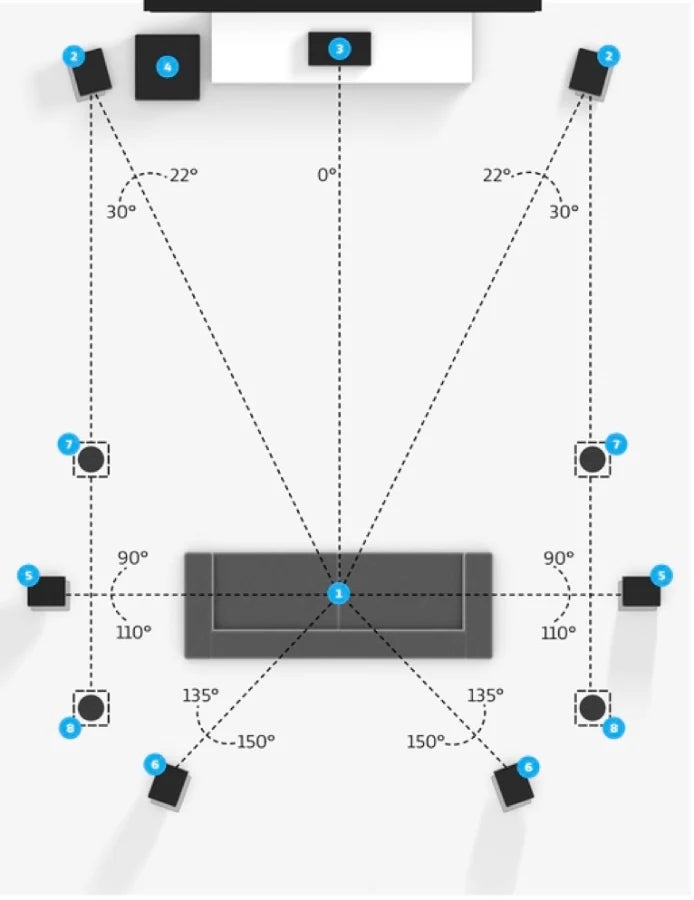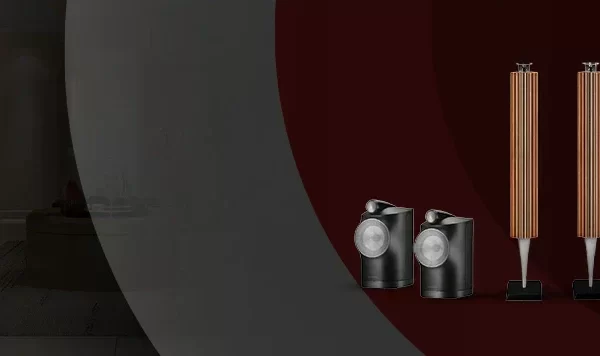
Unlock the perfect audio sweet spot by learning correct front speaker placement and seating distances and discover the science behind flawless stereo imaging and room acoustics.
In high-fidelity audio, precision is everything. A speaker system worth thousands can still underperform if the listener is seated just a few feet too far or too close. Similarly, a meticulously designed room can betray your sonic expectations if your front speakers are slightly misaligned. As more audiophiles and home theatre enthusiasts reach for perfection, the quest for the elusive “sweet spot” has become more than guesswork—it’s a science.
This is where seating distance and front speaker placement calculators come into play, fusing psychoacoustics, room geometry and technological intelligence into a single tool. But for the discerning listener, not just any calculator will do. Understanding the intricate interplay between spatial positioning, speaker dispersion and acoustic behaviour is crucial to experiencing audio the way it was intended. This guide peels back the layers behind the calculator and explores how you can use it to unlock true immersive sound.
What is the Science Behind the Ideal Listening Position?
At the core of any speaker placement calculator lies the concept of the “sweet spot”—the position where audio from all channels converges in perfect phase alignment and balance. This is traditionally modelled as an equilateral triangle, where the left and right front speakers and the listener form three equal sides. This configuration ensures symmetrical time arrival and intensity from both channels, preserving stereo imaging and minimising phase issues.

Image credit – Audioholics
However, psychoacoustics—the way we perceive sound—adds another layer. Our brain relies on subtle cues shaped by the head and ears to pinpoint where sound comes from. This means that even small changes in speaker angle or seating position can noticeably affect how accurate and balanced the sound feels. Some advanced calculators account for this by suggesting toe-in angles based on your head position and height, helping you hear more precisely.
Importantly, the sweet spot isn’t a fixed point. It can shift based on speaker dispersion patterns, listener height and even interaural differences. For the most discerning users, interaural time and level differences are factored in to ensure truly precise alignment.
Room Dimensions and Acoustic Interplay
A perfect triangle layout won’t save you in a poorly optimised room. Room dimensions play a critical role in acoustic performance due to standing waves or room modes, which can create peaks or dips in bass response. Rooms with proportions based on the golden ratio (1:1.6:2.6) often result in more even modal distribution. A sophisticated calculator, such as Room EQ Wizard (REW), Dolby’s home theatre tools, or premium AV receiver companion apps like Anthem ARC or Dirac Live, should account for these relationships when suggesting seating distances. These tools can factor in room dimensions, wall proximity and even modal behaviour to ensure that seating placement complements both the acoustic and spatial dynamics of the room.
One common issue is boundary interference, specifically Speaker Boundary Interference Response (SBIR). When speakers are placed too close to walls, reflected sound waves can reinforce or cancel out certain frequencies, especially in the low end. Calculators that consider SBIR provide recommended distances from front and side walls for both speakers and listener positions.
Reflections are another major factor. Early reflections from side walls, floors and ceilings can colour the sound, blurring imaging and reducing clarity. High-end calculators may simulate these using ray tracing or image source methods, offering insights into ideal placements and acoustic treatment needs.
Tools of Precision: Standards and Methodologies
While many calculators seem similar on the surface, their accuracy and sophistication can vary widely. Some simply consider screen size and room length, while others integrate industry standards and advanced algorithms.
For example, THX guidelines recommend a 36° field of view and a seating distance of approximately 1.87x the screen height. Dolby Atmos specifications prescribe a speaker angle of 22 to 30 degrees from the centre and define vertical placement for height channels. The ITU-R BS.775 standard, commonly used in mixing environments, defines strict spatial relationships for multi-channel setups.
A refined calculator should let users toggle between these standards, adjust for speaker type and simulate how sound pressure levels decay over distance. This becomes especially important when using DSP-based room correction systems like Dirac Live, Audyssey, or ARC Genesis. While these systems correct frequency anomalies, they can’t compensate for flawed geometry. A calculator that provides optimal physical placement can serve as the best foundation for any digital correction.
Speaker Design and Its Impact on Placement
Speaker design profoundly affects optimal placement. Wide-dispersion tweeters, such as dome tweeters, offer more forgiving placement due to their broader coverage. However, they are more prone to early reflections, which can degrade clarity. In contrast, narrow-dispersion designs, like horn-loaded or waveguide-based speakers, demand more precise toe-in and listener alignment but offer superior imaging.
On-axis positioning ensures the most accurate frequency response, especially for high frequencies. However, off-axis listening can be important in shared environments. The best calculators allow users to input or select speaker beamwidth and dispersion characteristics, then suggest placement and toe-in angles accordingly. Vertical alignment and height also play roles, particularly when listeners are seated on different planes or when speakers are elevated for aesthetic or spatial reasons.
Visual Immersion and Audio Synergy
The relationship between screen size and speaker placement cannot be ignored in home theatre environments. For a cohesive audio-visual experience, seating distance must complement both the image size and soundstage. To ensure an immersive experience, we recommend aiming for a field of view between 30 and 40 degrees—THX, for instance, recommends 36 degrees. In a typical home theatre room with a 120-inch screen, this translates to a seating distance of roughly 10 to 12 feet.
With projector setups, which typically use larger screens, speakers must be spaced wider and potentially placed lower to maintain cohesion. In smaller TV-based setups, the opposite is true—tight spacing and height compensation may be necessary. Some high-end calculators now factor in screen mounting height and angle, suggesting speaker tilt or vertical adjustment to ensure alignment.
For precise calculations tailored to your space, we suggest using a professional-grade tool like the Dolby Room Design Tool or calculators provided by certified integrators and acoustic consultants.
Practical Use Cases, Common Mistakes & Expert Tips
Let’s look at some general guidelines and common pitfalls when placing speakers in different kinds of setups.
- Dedicated Home Theatre Room: In a 20 by 15-foot room with a 120-inch screen, the calculator might suggest a seating distance of 10.5 to 12 feet. Front speakers would be placed 30 degrees off-centre and 3 feet from the front wall to reduce SBIR effects.
- Multi-Use Living Room: With a 65-inch TV and limited space, the tool may recommend an 8-foot seating distance, adjusted speaker toe-in for proper imaging and targeted acoustic treatments to manage boundary reflections.
- Nearfield Setup: For desktop or gaming environments, a 3-foot equilateral triangle ensures accurate timing. Even slight toe-in or vertical tilt adjustments can significantly affect clarity and directionality.
However, many setups can still suffer from common but avoidable mistakes.
- Over-Spaced Speakers: Placing speakers too far apart can create a weak centre image, breaking the cohesiveness of the stereo soundstage.
- Centre Room Seating: Sitting in the exact centre of a room often places the listener in a bass null, resulting in a weak low-frequency response.
- Wall-Hugging Speakers: Placing speakers directly against walls can cause excessive or uneven bass due to boundary interference.
- Neglecting Physical Setup: It’s best to get the speaker and seating positions right physically before applying digital corrections like EQ.
- Lack of Measurement Tools: Using precise tools, such as laser measures, can significantly enhance angle and distance accuracy.
- Ignoring Acoustic Treatment: Treatments like first reflection absorbers and bass traps, when guided by calculator data, can enhance sound clarity and balance.
Looking Ahead: AI and Adaptive Audio Placement
Speaker placement is evolving as new technologies simplify what was once a manual, trial-and-error process. Some apps now use your phone’s camera or LiDAR to scan a room and suggest speaker locations based on its shape and layout. Others, like those found in modern soundbars and wireless speakers, use built-in microphones to listen to the room and automatically adjust the sound for better clarity and balance.
As these technologies improve, we can expect placement tools to become more user-friendly, offering real-time suggestions and adapting to changes in room setup. Instead of requiring expert knowledge, future systems will help everyday users get professional-grade results with minimal effort.
A well-designed seating distance and speaker placement calculator is more than a helpful tool—it’s a critical component in the pursuit of audio perfection. However, when coupled with acoustic science, guided by industry standards and used alongside calibration systems and thoughtful room design, it transforms your setup from acceptable to exceptional. For those chasing the pinnacle of sonic realism, mastering placement isn’t optional. It’s the final frontier.






